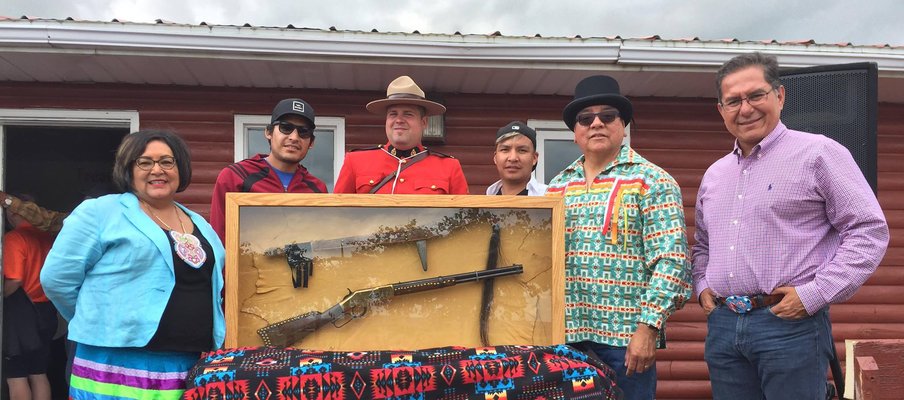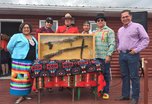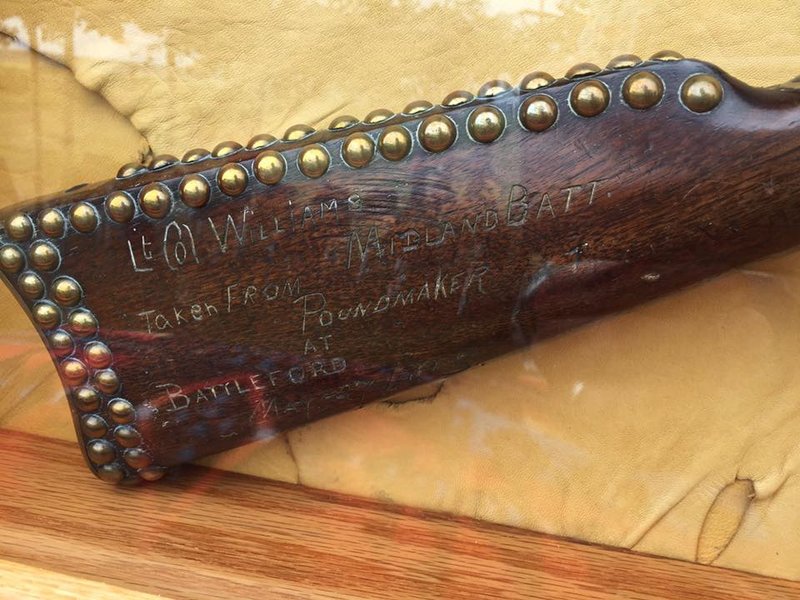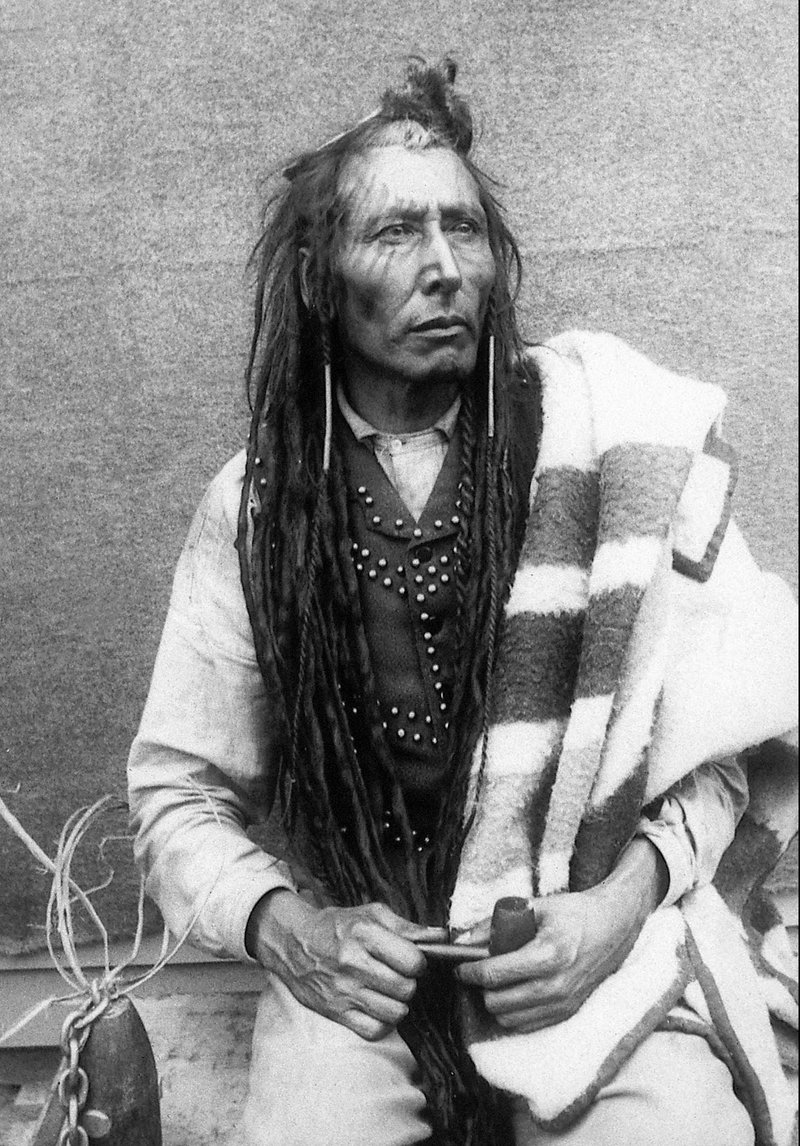History Returns Home

Related Programs

Chief Poundmaker’s items have temporally returned home.
This past July, for the first time since 1885, several personal belongings of Chief Poundmaker came back to the community where they were taken from more than 100 years ago. Poundmaker’s Winchester gun and his staff went on display at Poundmaker Museum, located approximately 175 kilometres northwest of Saskatoon at Poundmaker Cree Nation.

Chief Poundmaker was 19th century Plains Cree chief who was convicted of treason and imprisoned after the 1885 North-West Resistance. He passed away shortly afterward his release from prison. Many of Poundmaker’s belongings were taken and ended up in museums around the world.
According to Floyd Favel, curator, Poundmaker Museum, Poundmaker’s belongings represent the respect he held within his community. “They are important as it indicates the stature that this man held in the Cree society, and it was a great injustice that the Canadian Government falsely accused him of treason and sentenced him to prison. It was our way to acknowledge the past.”
Prior to 1885, the shortage of bison and broken Treaty promises of food rations and agricultural implements left Poundmaker’s people starving. According to Wikipedia, Poundmaker and his band members tried to get help for his people by traveling to Battleford to ask federal agents for food. However, when news of their arrival spread across the community, terrified settlers and the Indian agent fled inside Ford Battleford.
During this time, the town of Battleford was looted, however, accounts of whether who was responsible differ. After being refused to speak to the Indian agent, Poundmaker and his band members went back to their reserve.
On May 2, 1885, Lieutenant-Colonel William Dillon Otter’s troops attacked Poundmaker’s camp near Cut Knife Hill to punish Poundmaker for the ‘siege’ of the fort. Otter’s troops were badly beaten and retreated. Poundmaker, who did not take part in the fight, ordered his warriors not to pursue the soldiers. Poundmaker went to Batoche to surrender to authorities after hearing the news of Louis Riel’s defeat. He was convicted of treason and died of a lung infection shortly afterwards. (*)
“To have reconciliation, we must approach each other in a place of equality.”
The return of belongings could help with the exoneration of Chief Poundmaker. Favel says, “The fact that once again, our Chief was being spoken of, can only lead to the possibility of exoneration. Canada must admit its wrong, its unjust conviction of our Chief, I would say, its fraudulent conviction of our Chief based on a false letter, and a complete twist of his requesting of food, being turned into a hostile act.” He adds, “Our Chief was falsely and deliberately manipulated by Government forces, in order to silence this respected political leader. The result of this was decades of oppression for our people in our community, and decades of shame and obstacles to enjoyment of life and pride.”
Favel initiated the process of temporarily bringing these items back, with the long-term intent that the museum can repatriate these and other items held in other areas of the world.
Favel explains, “Chief Poundmaker lived during a troubled time. He was the most influential Chief in the Treaty 6 area, along with Chief Big Bear, as both were advocating for the fulfillment of Treaty promises and terms. The gun that was once Poundmaker’s … I don’t know how the museum came in possession of this gun … to us represents livelihood, as it with a gun that once protected and fed one’s people. The staff, mistakenly called a ‘war club’, represents good governance and authority. For any First Nation to succeed in this era, they need good governance. This was the significance of these two items coming to our community. Together these two objects by once again landing in the land from which its owner was unjustly taken from, can only lead to positive results.”
On July 18, 2017, the Poundmaker Museum and Historic Site re-opened with the unveiling of Poundmaker’s returned belongings and with the presence of dignitaries and Elders who spoke of the history of the resistance of 1885. The Poundmaker Museum received funding from SaskCulture’s Museum Grant Program and worked with Parks Canada, the Manitoba Museum and Fort Battleford to secure the loaning of Poundmaker’s belongings.

“Having Poundmaker’s objects back allows us to once again own our own history and cultural artifacts and to interpret our own history in our way, not in the standard Canadian manner, which has proven itself to be incorrect or very biased on many occasions. To have reconciliation, we must approach each other in a place of equality,” adds Favel.
* Historical information on Poundmaker was found on https://en.wikipedia.org/wiki/P%C3%AEhtokahanapiwiyin and http://www.cbc.ca/news/canada/saskatoon/poundmaker-artifacts-saskatchewan-museum-exhibit-1.4191865.



